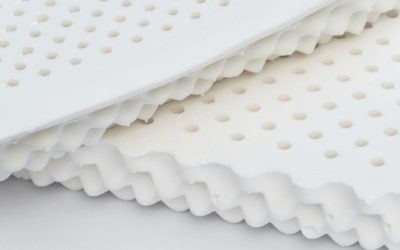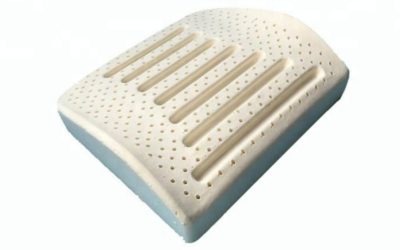The pain in your back is making you go through a lot of trouble right now, isn’t it? To avoid purchasing an office chair cushion that actually worsens your back, you should first read this article to find the best seat chair cushion for back issues. My experience as a chiropractor who has treated low back pain for more than thirty years gives me a clear understanding of the minefield of gimmicky office chair cushions and how to find relief.
As a general rule, a natural latex foam cushion is the best office chair cushion for back pain as it provides spinal stability and comfort. Using a natural latex office chair cushion will help you distribute your weight evenly. Thus, the vertebrae will have an even distribution of pressure between them, and you won’t overload your spine.
Let me explain why your back is sore, and then I will walk you through logical steps to find the most appropriate cushion for pain relief and all-day comfort. I’ve helped countless individuals such as you mitigate their pain issues. Therefore, please do yourself a favour by taking a few minutes to read this article so you can get the help you need.
Best Seat Cushion for Back PainDoctor's Recommendation
Black Friday Offer!
Get 35% off Orthopedic Seat Cushion
Product DetailsResearch-based Design
Recommended ForBack Discomfort
Video Guide
Video Guide
The Benefit of Seat Cushions for Back Pain
If you suffer from pain, you should do everything in your power to eliminate the cause. In my experience over the years, I have seen too many doctors, trainers, or therapists simply tell back patients they need to do some exercises in the office when they present with back issues. Exercise will seem the best approach if you suffer from back pain, right? Have you noticed that most exercises make your pain worse? Another way to look at this is if your front end is out of alignment, would you drive your car harder and faster? No, of course not. Doing this may cause wear and tear and more significant problems. Before you seek treatment for your back condition, you should give yourself a moment to think about your structure. You might be experiencing chronic pain because of lifestyle changes, posture problems, or whatever. It is more precisely the result of abnormal patterns of movement and motor control that causes these pains. For example, in modern times, we have many people with intolerant backs due to flexion (bending forward). A seat cushion may help prevent that. Sitting hunched forward, exercising (in flexion), or bending over to pick up something can exacerbate your pain and keep your tissues from healing. Therefore, to ensure that your muscles, joints, and discs recover fully, you must figure out your specific pain triggers and avoid them.
Seat Cushions Help Spinal Stability
In terms of the spine, many ‘ergonomic’ or ‘orthopedic’ office chairs have little value in terms of stability. A balanced body is even more important, but it does nothing to address a non-stable spine. Rotation, bending, and compression may all be sensitive to unstable spines. An ideal spine can only be achieved when the entire musculature, including the anterior chain (front) and posterior chain (back) muscles, is strengthened in a balanced manner. Concentrating on a single muscle is usually not beneficial since it tends to create patterns that result in a lesser degree of stability. It is essential to consider this point when discussing the best chronic pain office chair cushion later. Many forms of therapy aim to strengthen muscles and increase the range of motion in the spine. This is a downside: people with too much flexibility in their back are more likely to encounter future back problems. Black Friday: 35% Off Today
Typical Delivery 1-3 Days
How to Sit Correctly To Avoid Back pain

- It’s easiest to stand up every 20 minutes and move around.
- Having great lumbar support on hand can also reduce chronic pain, and, in a pinch, you can also use a rolled-up towel for support.
- Ensure your seat is elevated to the highest possible level while keeping your feet flat on the floor. If you need a footrest, use one.
- I get the most positive feedback from people who tell me to keep my hips above my knees. This way, your pelvic and spinal muscles are relaxed because they naturally tilt forward.
- To make your chair wider is another tip that comes highly recommended. The seat depth is usually adjustable in any top ergonomic chair. Remember to keep your knees no closer than three fingers away from the edge of your seat.
- Stretching the legs while sitting can also provide relief from chronic pain. Therefore, ensure your legs are moving, extending, and contracting even while seated. Plan to take stretching breaks periodically during the day.
- You should ensure enough space under your desk for your legs. Store your files, cables, printers, and other items elsewhere, and unclutter the area under your desk.
All Day Comfort & Support
Choosing a Desk Chair Pillow or Seat Cushions to Stabilizes Your Back
If you are into super easy and inexpensive alternatives to office chairs, I wrote a fantastic article on how and why you should consider these options for spine pain, and I encourage you to read it!
Let’s begin with cushion types that I do not recommend. Memory foams, polyurethane foams, and Gel foams are some of these. Here are the reasons:
Memory Foam Office Chair Seat Cushions
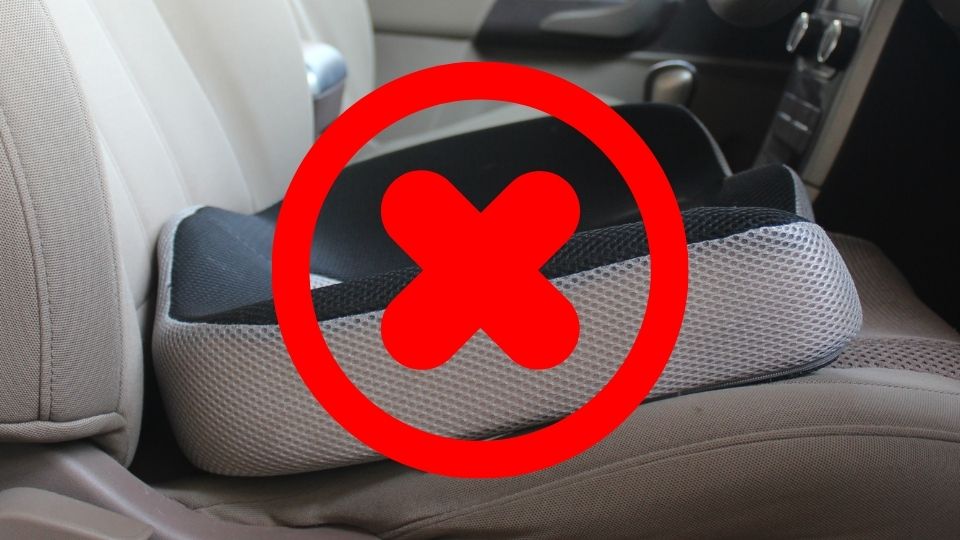
- Insufficient Responsiveness. When you use a responsive cushion, you will experience fewer back issues. An element of responsiveness is the degree and speed with which a foam responds to pressure or motion. I feel memory foam is ineffective in relieving chronic pain because of its inherent inflexibility.
- Retains Heat. Because of its high heat retention, memory foam can be uncomfortable for some users when seated.
- Petrochemical! Memory foam is a polyurethane produced by refining crude oil. PVC, antimony trioxide, polyurethane, formaldehyde, and other chemicals are commonly found in memory foam.
- There Are Too Many Fire Retardants
Gel Foam Office Chair Seat Cushions | Gel Seat | Double Seat
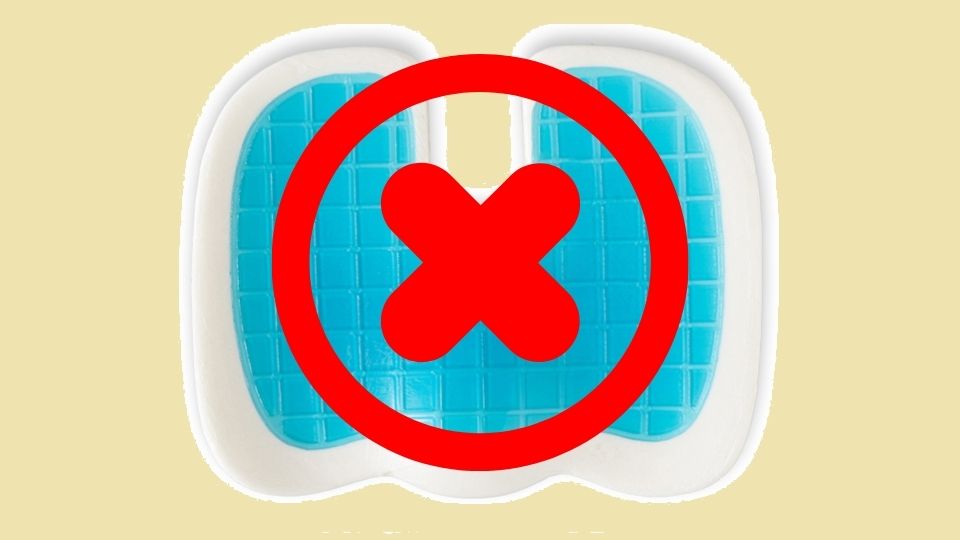
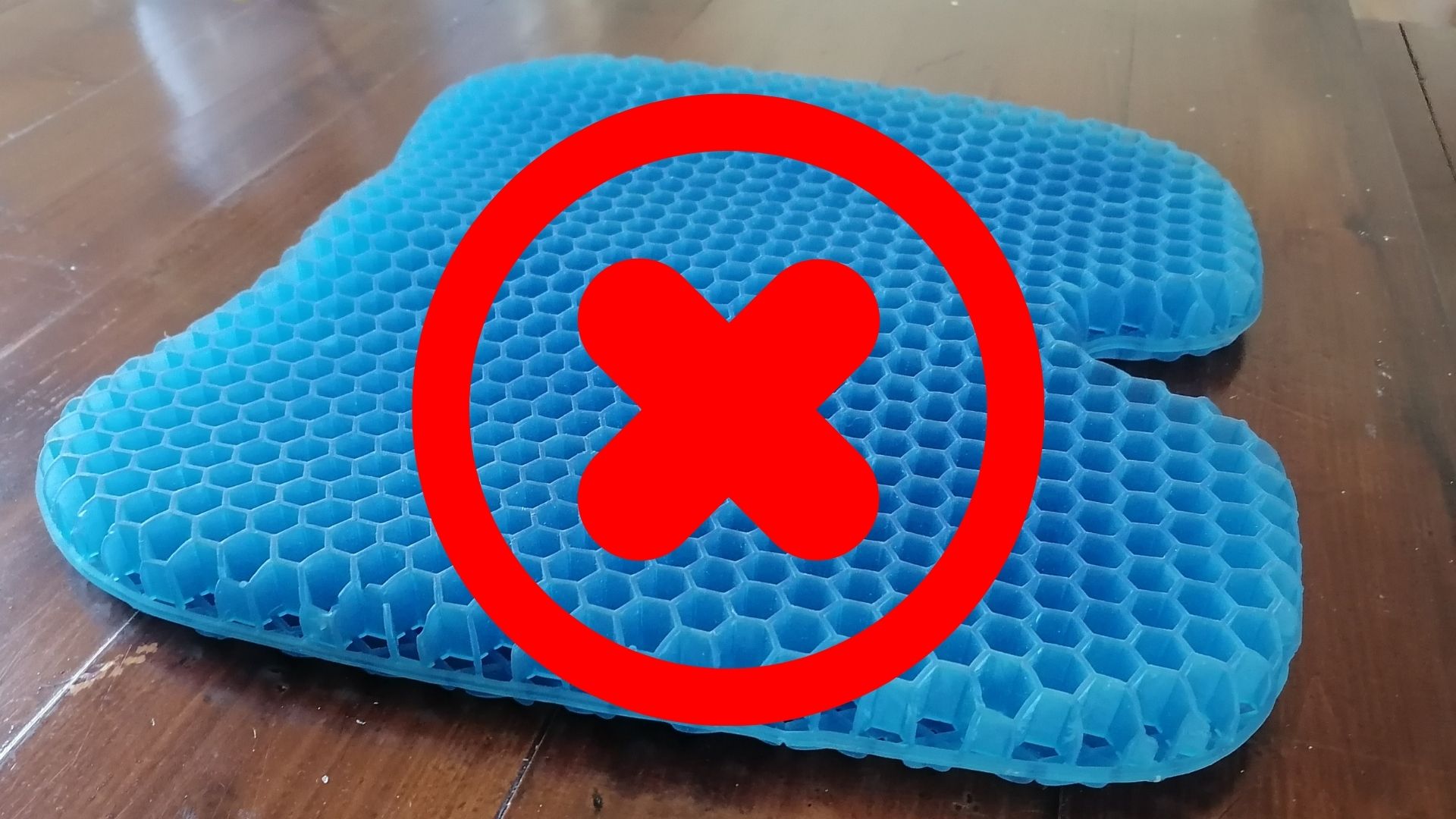
A Natural Latex Foam Chair Cushion is the Best Choice
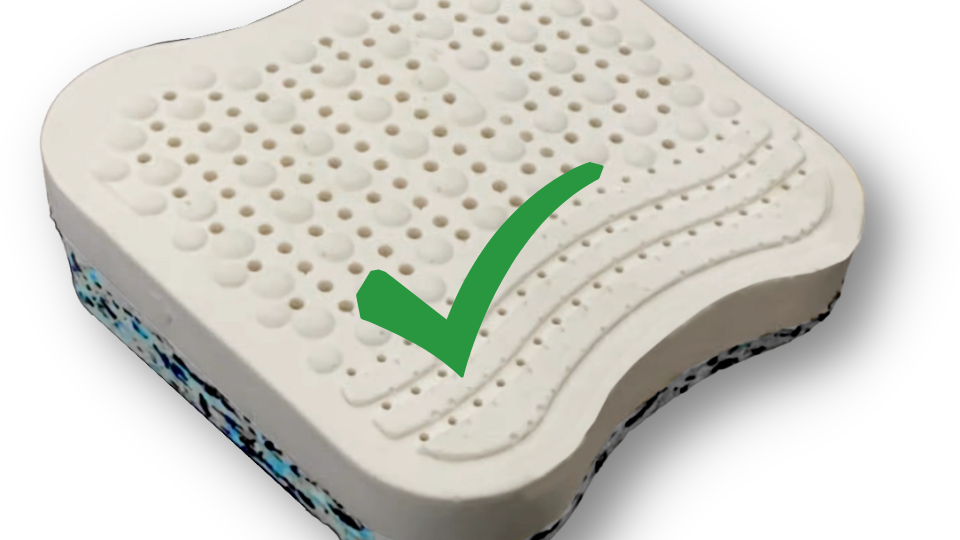
- Natural Latex is Better for Spinal Alignment. The cushion keeps your lower body aligned by sinking the heavier parts into the latex and naturally keeping the lighter parts aligned. A great natural latex cushion can distribute pressure evenly and relax your muscles and ligaments while improving blood circulation.
- Pressure Relief. Furthermore, a natural latex pillow can align your spine and alleviate pressure points.
- Resilient. Typical natural latex seat cushions prevent you from sinking into them too much after a certain point and rebound as you apply your body weight. This is what makes natural latex a good choice.
- Customizable. Due to natural latex’s versatility, I’ve been able to design so many custom products, which is why chiropractic and ergonomics are among my favorite fields.
- It’s Non-Toxic/ Eco-Friendly. In contrast to memory foam cushions, natural latex seats are made of natural materials and do not contain chemicals.
- Excellent Air Circulation. A latex foam pillow can provide more comfort than many conventional memory foams (petrochemical-based).
- Anti-Microbial. Natural resistance to bacteria, mold and dust mites means that latex prevents the growth of these organisms. In addition to providing a healthy working environment, the device is also antifungal and antibacterial.
What Shape Seat Cushion Is Best?
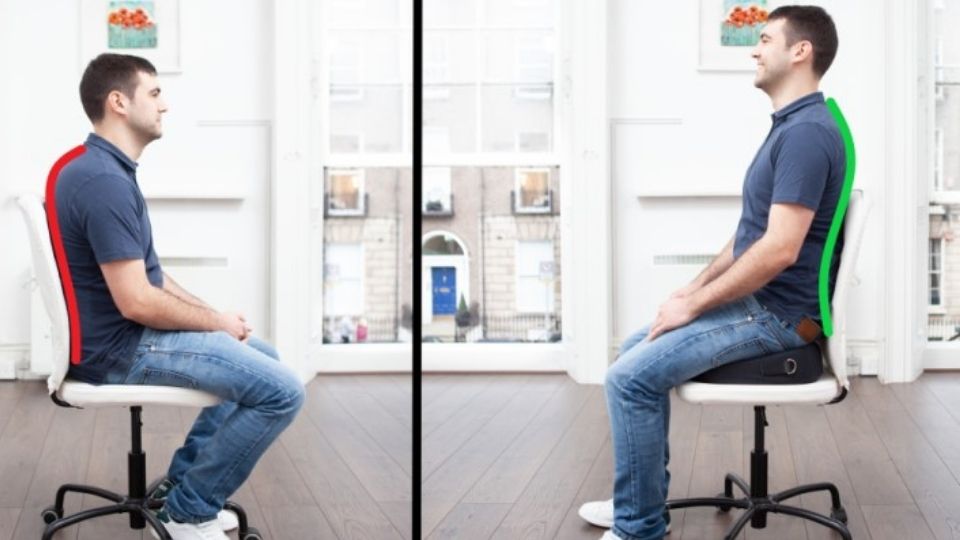
- As you sit, the first place the cushion touches you are those bony prominences in your buttocks. Cushions that reduce pressure points redistribute pressure away from sharp areas in the pelvis, so we feel less low chronic pain when sitting!
- You will notice that the shape of a seat cushion changes when you sit down. A softer foam, for example, is more likely to compress and “bottom out.”
- The multi-density foams in your seat cushion will provide support and pressure distribution. The soft-top comfort layer should be positioned over a firm base. This is essential!
- Great seat cushions that are molded to the body shape are very comfortable. Moreover, a cushion pillow should slope the hips toward the knees to increase the trunk-to-thigh ratio, providing adequate support for bony prominences.
- The seat cushion should stabilize your spine and engage your core as you sit. It might seem counterintuitive, but dispersing your weight over your core, not your spine, will make you more comfortable. This way, you will load and move from your hips while seated, thus stabilizing your spine.
*Research for these topics includes purchased or viewed products from amazon buy including search terms: best seat cushions for back pain, the comfilife gel enhanced seat cushion, everlasting comfort seat cushion, purple royal seat cushion, purple double seat cushion and the tempur-pedic seat.
Sitting Wedges: What Are They?
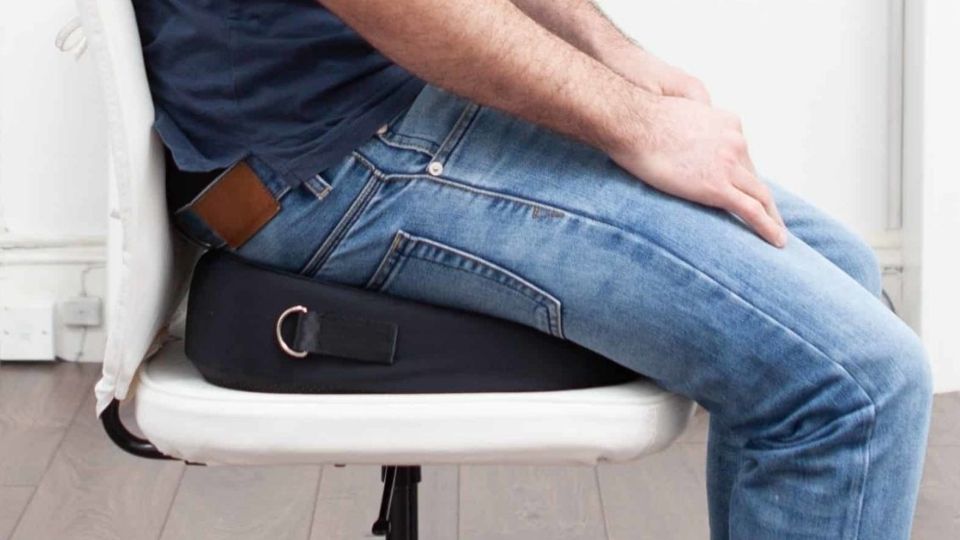
Black Friday: 35% Off Today
Typical Delivery 1-3 Days
How Do Sitting Wedges Work?
You can use a wedge cushion to reduce your chronic pain while sitting on it. Using a sitting wedge, your torso and upper legs will be more aligned. A cushion will also improve your spine’s inward curve, and your pelvis will be tilted forward. It will reduce stress, stabilize your spine by distributing your weight more naturally through your muscles, and make it easier for you to sit upright without strain on your joints, discs, and ligaments. Based on how you sit, a seat angle of 8 to 13 degrees will determine the number of back muscles used. It can be more effective if you have a current back problem or if you’ve never sat like this before to sit for short periods and then gradually increase the time you sit on it as your back muscles develop. Using a great sitting wedge pillow, you removed the problematic load on the coccyx area, removing the pressure in this area. You will be able to sit comfortably without experiencing any discomfort if you do this.
Why Should You Use a Sitting Wedge?
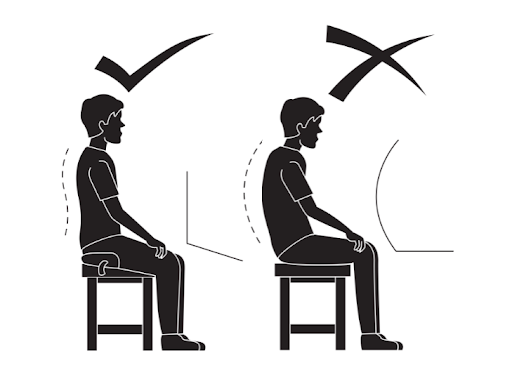
These Are Some of the Benefits of Seat Cushions:
- Pelvic support and comfort for lower back pain
- Improved posture
- Muscles of the core (transverse abdominis, pelvic floor, quadratus lumborum, obliques) are engaged when using a wedge cushion.
- May support chronic pain, lower back, or sciatica
- Coccyx pain relief
How Should You Use a Lumbar Core Muscle Wedge | Foam Seat?
If you want to sit on this, you can place the foam seat on a chair with the slope pointing toward the front and then place it on a chair. Your spine will adjust naturally to a neutral position as you sit up straighter. Generally, a sofa or chairs with soft seating cannot accommodate these wedges too well.
My Recommendations for a Wedge Cushion If You’re Thinking About Buying One:
- You can improve your posture and comfort with an ergonomic wedge cushion.
- A slope of 8-13 degrees
- A high-quality foundation foam base (+96 kg/m3)
- A layer of top comfort (56-68kg/m3)
- Among all foams, Natural Latex provides the best level of comfort, resilience, and alignment
- Cover with 4D stretch
- Non-skid bottom cover
- Ensure that it will fit the car seat’s lumbar cushion or lumbar pillow
Top Posture Wedge Chair Cushion Reduces Low Back Pain
Almost all seats, including couch and car seats, force you to have your knees higher than your hip joints, which can cause painful conditions such as sciatica and low back pain. You will enhance the curve of your lower spine when you use a wedge cushion. Therefore, your spine and sitting muscles will be less stressed, your weight will be distributed more naturally, and your joints, discs, and ligaments will be less stressed.
Great Seating Wedges For Chairs that Can Relieve Hip Pain | Cushions

- hip pain
- Putting pressure on the gluteal muscles in the lower abdomen
- stress on the nerves that pass through the glutes (piriformis muscles) and down into the legs
- your weight is distributed differently along with your hamstrings and tailbone
- increases strain on ligaments of the pelvic joints
A wedge cushion can help you sit up straighter and without pain. You’ll be able to distribute weight more naturally from your buttocks down instead of putting all the pressure on sensitive ligaments in your back and pelvis, which can ease or prevent pelvic discomfort, thereby reducing both lower abdominal muscle tension as well as low-back aches that may arise because of extended sitting periods.
10 Best Seat Cushions for Chronic Pain
| Seat Cushion | Material | Design | Two Foam Layers |
|---|---|---|---|
| Axial Ergonomic Seat Cushion | Natural Latex Top and Engineered Polyfoam Base | Designed by a chiropractor/ scientist | Yes |
| Everlasting Comfort Seat Cushion | Memory Foam | One-piece design | No |
| ComfiLife Gel Enhanced Seat Cushion | Memory Foam | U-shaped design | No |
| Amazon Seat Cushion Pillow for Office Chair | Memory Foam | Contoured design | No |
| LOVEHOME Lumbar Support Pillow | Memory Foam | Curved design | No |
| Cushion Lab Patented Pressure Relief Seat Cushion | Memory Foam | Curved design | No |
| Qutool Orthopedic Seat Cushion | Memory Foam | U-shaped design | No |
| Qutool Orthopedic Seat Cushion | Memory Foam | U-shaped design | No |
| Purple Royal Seat Cushion | Elastic Polymer | Grid design | No |
| Newgam Lumbar Support Pillow | Memory Foam | Curved design | No |
| Villsure Lumbar Support Pillow | Memory Foam | Curved design | No |
** (see bottom)
Top Back Pain Relief Cushion
The best back pain relief cushion should have lumbar support and be able to provide you with good nighttime sleep. A fairly thick pillow will help to elevate your hips while sleeping on your side or back, which can reduce the stress and pressure that is felt in your lower spine and lumbar area. Finding a pillow that supports your back can also help to keep it properly aligned while you are sleeping, reducing the chance of developing strain and pain during the night.
Back Pain Causes
Back pain affects millions of people worldwide as a chiropractor. Based on my experience, I’ve learned there are two main types of back pain – acute and chronic. Acute back pain typically lasts a few days to several weeks before subsiding, while chronic back pain persists for more than 12 weeks. Back pain in the lower back is one of the most common types, and it is caused by many factors, including:
- congenital skeletal abnormalities such as scoliosis, lordosis, and kyphosis
- degenerative conditions like arthritis, spondylosis, and disc degeneration.
- Other potential causes of low back pain include spinal problems like sciatica, ruptured discs, spinal stenosis, spondylolisthesis, and osteoporosis.
- Additionally, conditions like piriformis syndrome, fibromyalgia, endometriosis, pregnancy, and tumors can also contribute to back pain.
Lifestyle factors can also increase the risk of developing back pain. Overweight and elderly individuals are more likely to experience back pain, as are those who lead sedentary lifestyles or have poor posture. A prolonged sitting period, especially with inadequate back support, increases the risk of developing back pain. Stress, anxiety, and depression can also increase back pain risk. My advice as a chiropractor is to maintain regular movement and exercise, as well as use proper seat cushions to reduce back pain. In addition to getting enough quality sleep, a healthy back also depends on getting enough quality sleep. In order to minimize the risk of developing back pain and maintain a healthy back, individuals can maintain a good sitting posture during the day and a proper sleeping position at night.
Warning Signs of Back Pain
While many cases of back pain can be treated with self-care, there are situations where medical attention is necessary. There are specific warning signs that require immediate medical intervention, including:
- Back pain accompanied by a fever.
- Numbness in the groin region.
- Sudden weakness in the legs.
- Loss of control over bladder or bowel movements.
- Inability to sit or stand comfortably.
- Worsening pain instead of improvement.
Conclusion
The best office chair cushion for back issues (I believe) is the natural latex variety. Memory foam, gel, or other cushions may seem appealing but can worsen your discomfort. If you’re looking for a valuable guide to ergonomic information, our blog has all sorts of helpful articles about desk chairs and their benefits. We also guide how to choose an appropriate seat height so that your spine stays aligned while sitting at your desk or computer workstation. **Disclaimer: An ergonomic seat cushion can provide comfort and support for those experiencing chronic pain while seated. However, it is important to note that it is not intended to treat, cure, or prevent any medical condition. If you are experiencing chronic pain, please consult with a medical professional for proper diagnosis and treatment. The use of an ergonomic seat cushion should not replace medical advice or treatment prescribed by a healthcare provider.
Sources:
- Resident, O., Rogers, J.E. and Stauffer, E.S., 1971. Comparison of pressure distribution qualities in seat cushions. Bulletin of Prosthetics Research, (15-16), p.129.
- Koo, T.K., Mak, A.F. and Lee, Y.L., 1996. Posture effect on seating interface biomechanics: comparison between two seating cushions. Archives of Physical Medicine and Rehabilitation, 77(1), pp.40-47.
- Kim, W.J. and Chang, M., 2013. A comparison of the average sitting pressures and symmetry indexes between air-adjustable and foam cushions. Journal of Physical Therapy Science, 25(9), pp.1185-1187.
- Hobson, D.A., 1992. Comparative effects of posture on pressure and shear at the body-seat interface. Journal of rehabilitation research and development, 29, pp.21-21.
- Li, W., Mo, R., Yu, S., Chu, J., Hu, Y. and Wang, L., 2020. The effects of the seat cushion contour and the sitting posture on surface pressure distribution and comfort during seated work. International Journal of Occupational Medicine and Environmental Health, 33(5), pp.675-689.


